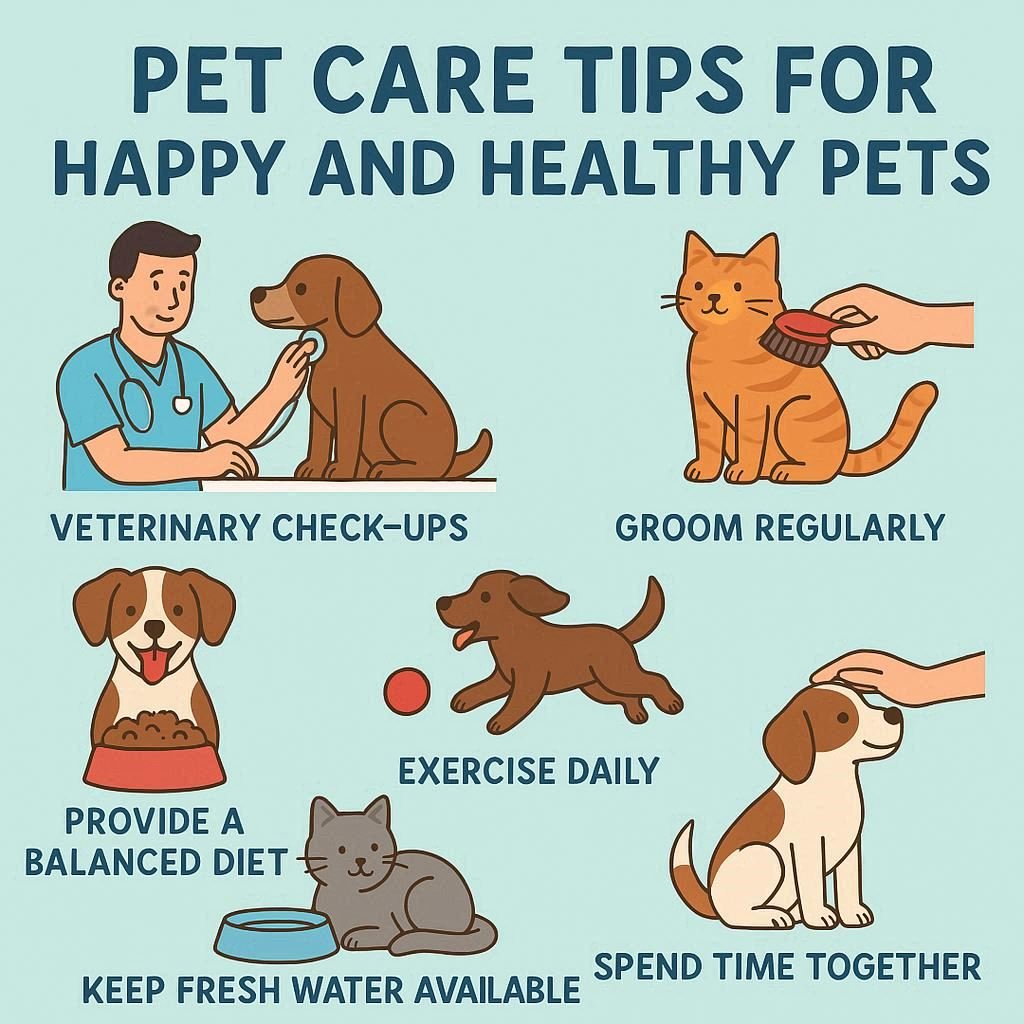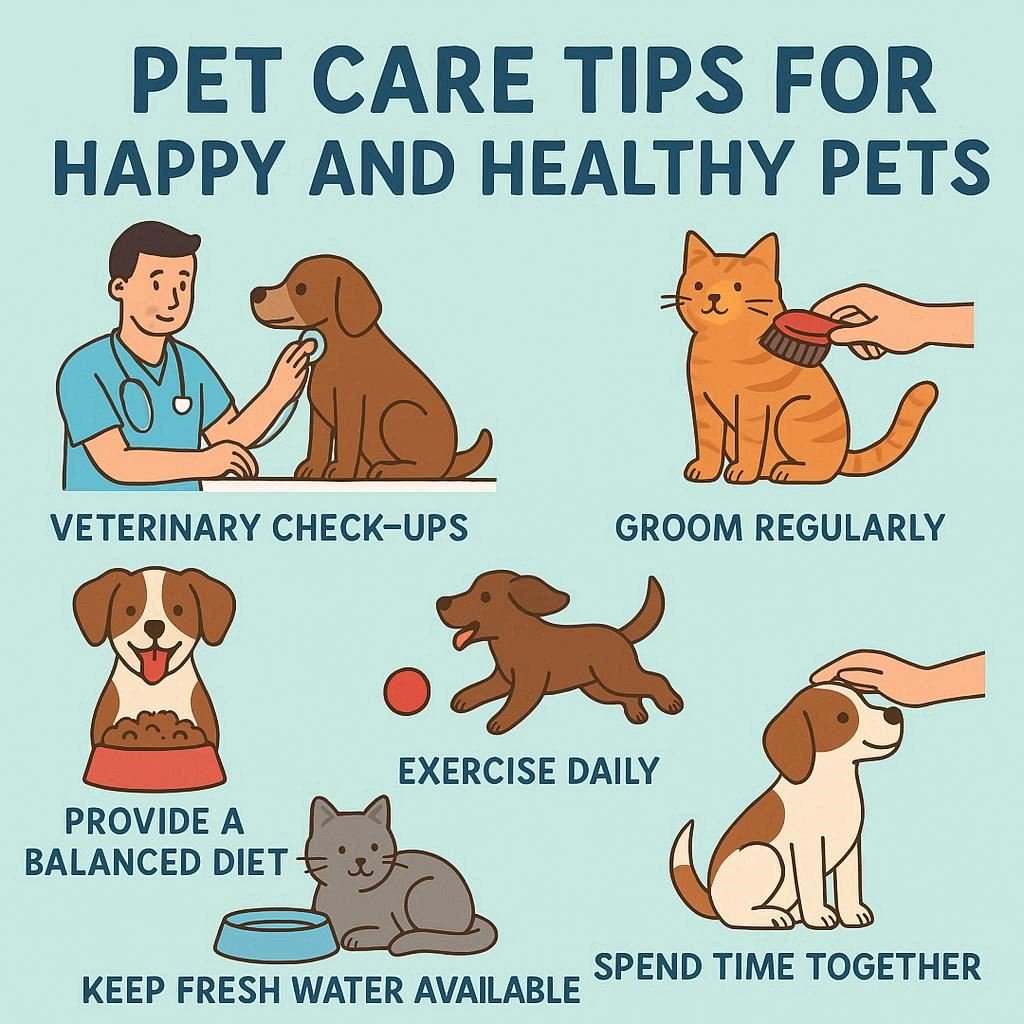Easy Steps for Pet Care: Tips for Happy and Healthy Pets

Easy Steps for Pet Care: Tips for Happy and Healthy Pets
Welcome, fellow pet parents! Whether you’re a seasoned animal lover or embarking on your first pet ownership journey, you know that our beloved companions bring immense joy, laughter, and unconditional love into our lives. But with great love comes great responsibility! Providing proper care for our pets isn’t just about feeding them; it’s about nurturing their entire well-being – physical, mental, and emotional. A happy, healthy pet is a thriving pet, and ensuring their optimal health is one of the most rewarding aspects of having them around. Let’s dive into some easy, practical steps that will help you keep your furry, feathered, or scaled family members feeling their best, every single day.
Taking care of a pet is a truly enriching experience, but it also requires dedication and knowledge. By following these easy pet care tips, you can significantly contribute to your pet’s longevity and quality of life. Think of these as your go-to guide for maintaining a fantastic daily pet care routine.
1. Nutrition and a Balanced Diet: Fueling Their Best Life
Just like us, pets need the right fuel to thrive. A balanced diet is the cornerstone of how to keep pets healthy. It directly impacts their energy levels, coat health, immune system, and overall vitality.
Choosing the Right Food
- Species-Specific: Always choose food formulated for your pet’s species (dog food for dogs, cat food for cats, etc.). Their nutritional needs are vastly different!
- Age-Appropriate: Puppies and kittens need different nutrients than adult or senior pets. Look for labels like “puppy formula,” “adult maintenance,” or “senior support.”
- Quality Ingredients: Read labels! Look for real meat as the first ingredient and avoid excessive fillers, artificial colors, and preservatives.
- Consult Your Vet: Your veterinarian is your best resource for recommending the right type and brand of food for your pet, especially if they have allergies, sensitivities, or specific health conditions.
Feeding Habits
- Portion Control: Overfeeding is a common problem leading to obesity, a major health risk. Follow the guidelines on the food packaging, but adjust based on your pet’s activity level and weight. Use a measuring cup!
- Consistent Schedule: Feed your pet at regular times each day. This aids digestion and establishes a routine.
- Fresh Water: Always provide access to fresh, clean water. Change it daily and clean the bowl regularly. Hydration is crucial!
- Treats in Moderation: Treats are great for training and bonding, but they should only make up a small percentage of your pet’s daily caloric intake.
Real-life tip: Sarah noticed her cat, Luna, gaining weight. Her vet suggested switching to a senior cat formula and reducing portion sizes by a quarter cup. Luna is now back to a healthy weight and more playful! This shows the importance of adjusting pet nutrition as they age.
2. Regular Exercise and Play: Keeping Them Active and Engaged
Exercise isn’t just about physical health; it’s vital for mental stimulation and preventing boredom and destructive behaviors. Different pets have different exercise needs, but all need some form of activity.
For Dogs
- Daily Walks: Most dogs need at least one good walk a day, some breeds require much more. Vary your routes to keep things interesting.
- Playtime: Fetch, tug-of-war, or a run in a secure yard are excellent ways to burn energy.
- Dog Parks: If your dog is well-socialized, dog parks offer a great opportunity for off-leash play and interaction.
- Structured Activities: Consider dog sports like agility, flyball, or obedience training for high-energy breeds.
For Cats
- Interactive Toys: Laser pointers (use with caution to avoid frustration), feather wands, and puzzle feeders can keep cats engaged.
- Climbing Structures: Cat trees and shelves satisfy their natural instinct to climb and observe.
- Scheduled Play Sessions: Dedicate 10-15 minutes a couple of times a day to actively play with your cat.
For Other Pets
- Small Mammals: Hamsters need wheels, rabbits need space to hop, and guinea pigs love tunnels.
- Birds: Provide ample cage space, perches, and toys for climbing and chewing.
- Reptiles/Fish: Ensure their enclosures are appropriately sized and decorated to allow for natural behaviors.
Actionable tip: Schedule exercise just like you would any other appointment. Consistency is key for your pet’s physical and mental well-being. A daily pet care routine should always include dedicated play time.
3. Routine Grooming and Hygiene: More Than Just Looking Good
Grooming is about much more than a shiny coat; it’s an essential part of your pet’s health and can help you spot potential issues early on.
Brushing
- Frequency: Daily for long-haired pets, a few times a week for short-haired ones. This prevents mats, reduces shedding, and distributes natural oils.
- Benefits: Stimulates circulation, removes loose fur and dirt, and strengthens your bond.
Bathing
- As Needed: Over-bathing can strip natural oils. Use pet-specific shampoo.
- Spot Cleaning: Sometimes a quick wipe down is all that’s needed.
Nail Trimming
- Regular Trims: Overgrown nails can cause pain, infections, and posture problems. Learn how to do it safely or have a vet/groomer do it.
Dental Care
- Brush Teeth: Ideally daily, with pet-specific toothpaste. Dental disease is rampant in pets and can lead to serious health issues.
- Dental Chews/Treats: Can help, but aren’t a substitute for brushing.
- Professional Cleanings: Your vet may recommend these.
Ear and Eye Cleaning
- Regular Checks: Look for redness, discharge, or odors. Clean gently with vet-approved solutions if needed.
Experience shared: After noticing bad breath in his dog, Max, John started a daily tooth-brushing routine. Within weeks, Max’s breath improved, and his vet noted healthier gums at his next check-up, avoiding a costly dental procedure. This is a crucial pet care tip!
4. Vet Check-ups and Vaccinations: Preventative Care is Key
Regular veterinary care is non-negotiable for happy, healthy pets. Prevention is always better (and often cheaper!) than cure.
Annual Vet Visits
- Comprehensive Exams: Your vet will check your pet’s overall health, listen to their heart and lungs, palpate their abdomen, and check their teeth and ears.
- Early Detection: These visits can catch health issues before they become serious.
- Age-Specific Care: Senior pets may need semi-annual check-ups as they age.
Vaccinations
- Core Vaccinations: Protect against common and serious diseases (e.g., rabies, distemper, parvovirus for dogs; rabies, feline leukemia for cats).
- Non-Core Vaccinations: Discuss with your vet based on your pet’s lifestyle and exposure risks.
- Stay Up-to-Date: Follow your vet’s schedule for boosters.
Parasite Prevention
- Flea, Tick, and Heartworm Medication: These are crucial, even for indoor pets. Parasites can cause serious illness.
- Deworming: Your vet will advise on a deworming schedule.
Spaying/Neutering
- Health Benefits: Reduces the risk of certain cancers and infections.
- Behavioral Benefits: Can reduce roaming, marking, and aggression.
- Population Control: Helps reduce the number of homeless animals.
Trustworthiness tip: Always follow your veterinarian’s advice regarding vaccinations and preventative medications. They are the experts in your pet’s health.
5. Mental Stimulation and Bonding: Nurturing Their Minds and Hearts
Our pets are intelligent and emotional beings. Mental stimulation and strong bonds contribute significantly to their happiness and good behavior.
Mental Stimulation
- Puzzle Toys: These dispense treats as your pet figures out how to open them, providing a rewarding challenge.
- Training: Even basic obedience training (sit, stay, come) provides mental exercise and strengthens communication.
- New Experiences: Safely introduce your pet to new sights, sounds, and smells. For dogs, this could be a new walking route; for cats, a new window perch.
- Interactive Play: Use toys that mimic prey for cats or engage in hide-and-seek with dogs.
Bonding and Affection
- Quality Time: Spend dedicated time each day petting, cuddling, or simply sitting with your pet.
- Positive Reinforcement: Use praise, treats, and gentle touch to reward good behavior.
- Understanding Body Language: Learn to read your pet’s cues to better understand their needs and mood.
- Consistency and Patience: Building trust and a strong bond takes time and consistent positive interactions.
Example: After adopting a shy rescue dog, Bella, her owner focused on short, positive training sessions and quiet cuddle time. Over several months, Bella transformed into a confident, affectionate companion, proving the power of mental stimulation and consistent bonding in pet care.
FAQ: Common Pet Care Questions Answered
How often should I feed my pet?
The frequency depends on your pet’s age, size, and species. Puppies and kittens generally eat 3-4 times a day, while adult dogs and cats typically eat 1-2 times a day. Always follow your vet’s recommendations and the guidelines on your pet food packaging.
What are the signs of a healthy pet?
A healthy pet usually has clear, bright eyes, a shiny coat, healthy gums, a good appetite, consistent energy levels, and regular bathroom habits. Any significant changes in these areas could indicate a health issue.
How much exercise does my pet need?
Exercise needs vary greatly by species, breed, age, and individual pet. Dogs generally need 30 minutes to 2 hours of activity daily, while cats benefit from several short play sessions. Consult your vet to determine the ideal amount for your specific pet.
Is it important to microchip my pet?
Yes, microchipping is highly recommended! It significantly increases the chances of being reunited with your pet if they ever get lost. It’s a quick, safe, and permanent form of identification.






